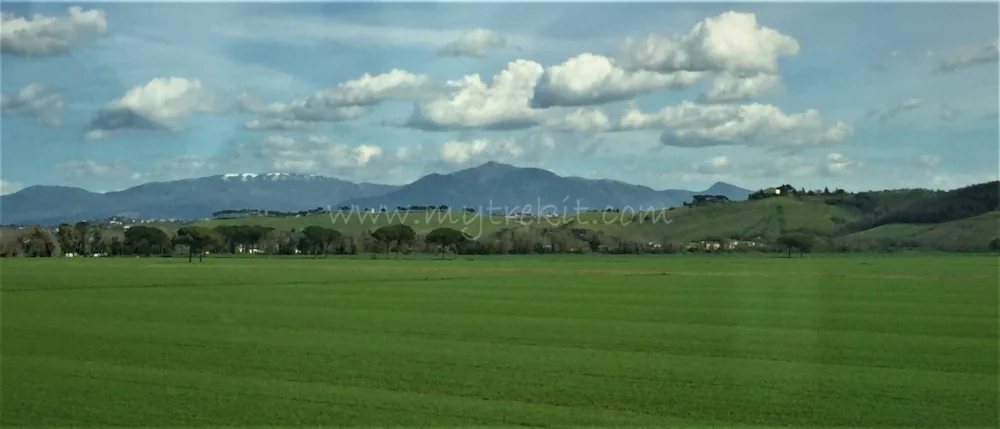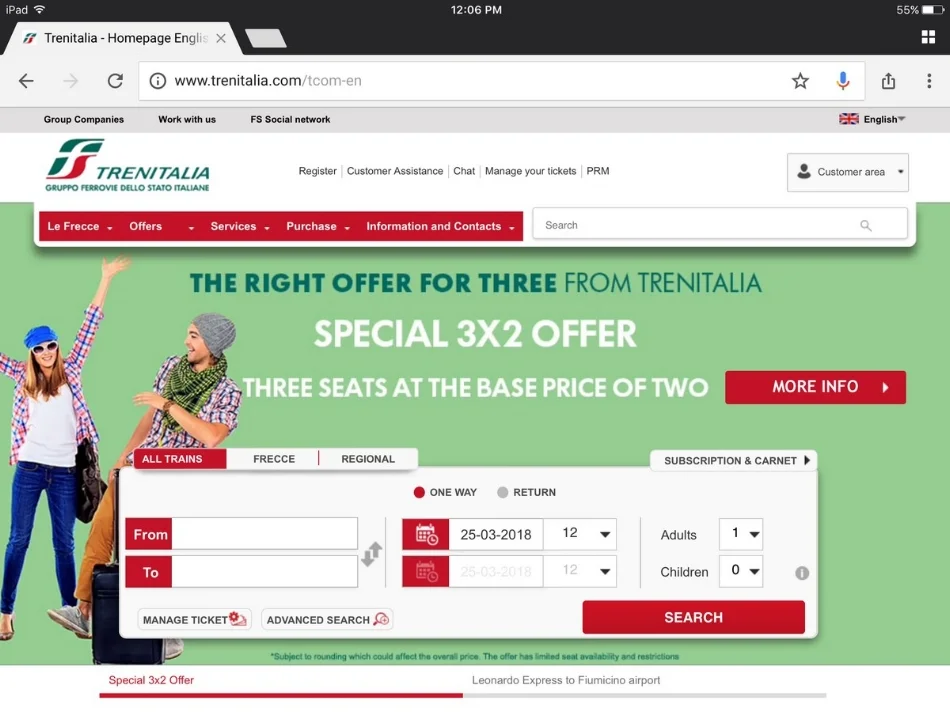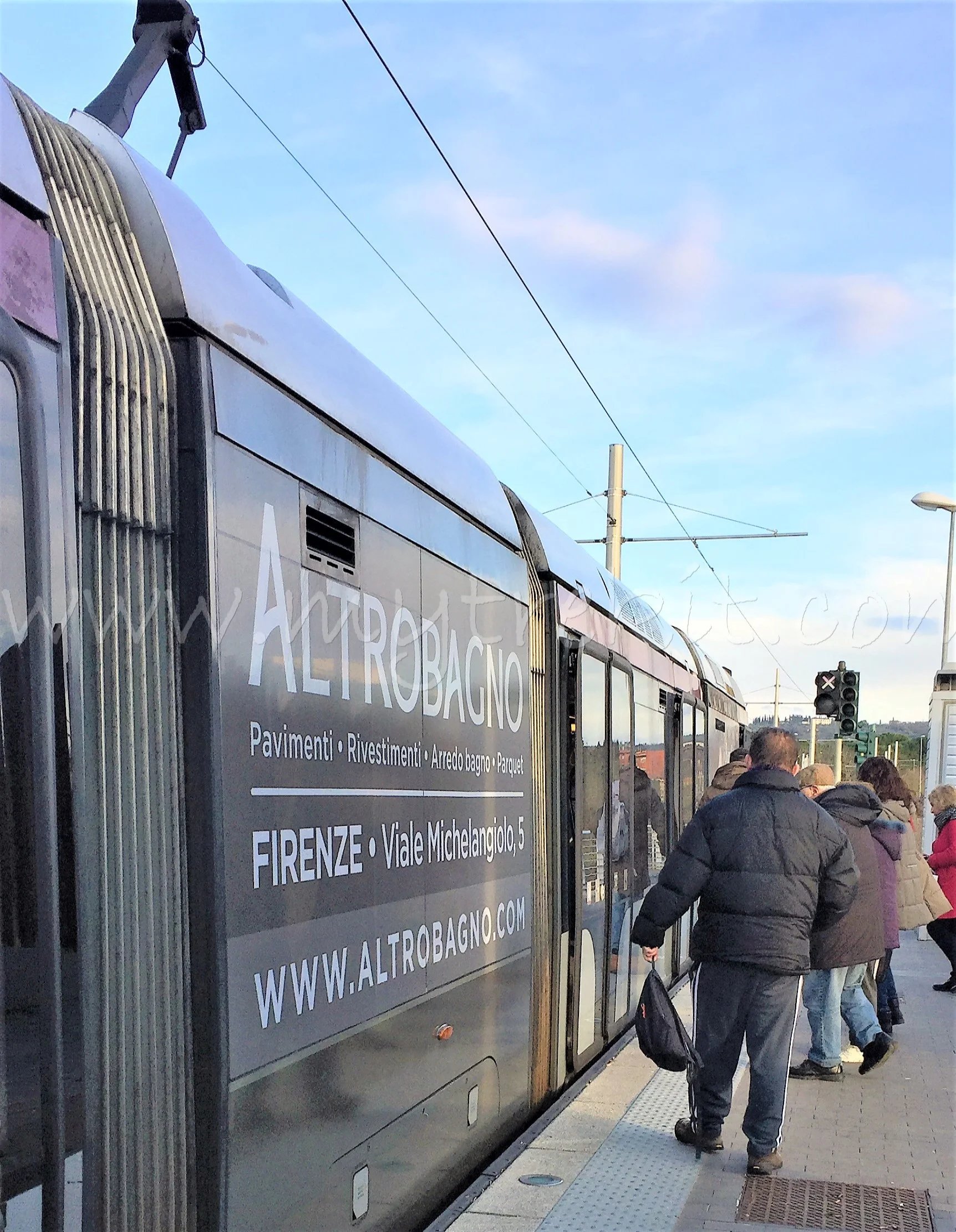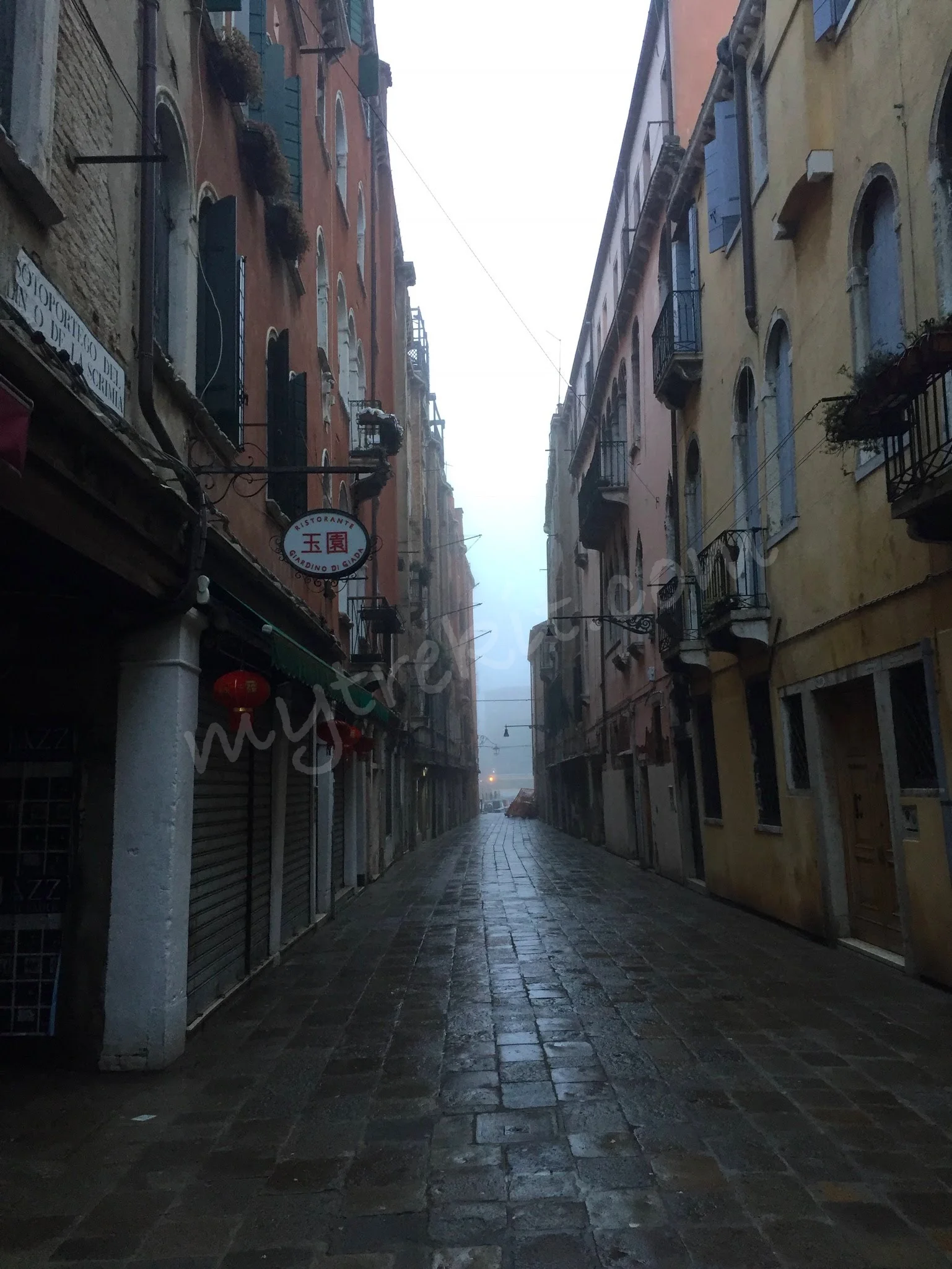How to Book a Train in Italy
/Views of the Italian countryside with the majestic mountains of the Apennine Range in the distance.
Did you ever feel that inner 'panic button' at the prospect of trying to book important transportation in another country? I still get this feeling, even after successfully navigating in big cities (London, Paris, Copenhagen, Washington D.C., etc.).
I guess I'm afraid to make an expensive mistake. For all of you who have felt this way, or are currently feeling this way, I wanted to write a post about booking train transport in a very popular destination: Italy. These instructions can also be used as general information for booking in other European countries, too.
I recently returned from a trip to Italy and primarily used the Italian train system. I have lots of information to share to help make your travels less stressful.
I am usually a proponent of renting a car and exploring a country, but for this venture, I had decided to use public transport between towns. Overall, it was a relatively pleasant experience.
Here are my ‘Notes’:
Advantages:
No worries about navigating, parking, gas stations, flat tires, and being too tired to drive. Those were plenty of good reasons for me, for this particular trip with just me and my daughter.
Using the Italian train system:
1. First, find the names of the Italian destinations in Italian, and know the name of the train station for both arrivals and departures. For example: Venice = Venezia Rome = Roma Florence = Firenze
In addition, some destinations have more than one station, so you will need to know which to choose. For example:
Roma Termini is Rome's popular train station nearest the Colloseum. Another example is Firenze Santa Maria Novella (S.M.N.) Station.
2. Look up your route first by using the website, www.Rome2Rio.com. This is important, as it maps the entire route for you to see, and indicates any transfers/changes you may have to make. This will also show you which station is closest to your hotel, etc. (See my previous blog post on 'How To Find Transportation Options...' by clicking here).
3. Next, go to www.trenitalia.com. Choose your language option in the top right corner of the screen. For English, select the UK flag. Fill in the fields asking for Round trip (Return) or One-Way, From and To, Date(s), and Time(s), and Quantity.
4. Identify the difference between High-speed trains, labeled “Freccia”, & regional (Regionale) trains. This is important. You can also select just to see trains only labeled 'Freccia' or only 'Regional' versus 'All Trains'.
High-speed trains: Labeled as “Freccia” Trains, i.e. Frecciarosa, Frecciaargenta, Frecciabianca. These trains have few stops and they transport to the main Italian cities. They are also more expensive than Regional trains, however, when you travel, time is money, and you need to max out on the time you have. Usually, these trains have assigned seats & the tickets to popular cities, like Venice, fill up more quickly--Monitor this by checking availability on a regular basis on the website.
Regional Trains: Marked as 'Regionale', these are the trains that make the in-between stops, therefore, it takes more time to move from Point A to Point B.
Important: Sometimes, Regional Trains are your only option. However, there are shortcuts you can try, for example, a partial route on a Freccia; another part/or remainder on a Regional.
For additional information, read the Footnotes section in this blog post below.
>> **This is where Rome2Rio’s mapping route comes in extra handy.**
Example result with the various 'Frecce' Trains circled.
Example result showing only Regional trains are used for this route. The red arrows note any train changes required.
5. Check & double-check all the details of the booking & determine if you want to pay now or later. There are some tickets which allow you to make one change/correction. You have the option to complete your transaction online OR use the website as a guide & timetable, and then purchase your tickets from a booth at the station, if you prefer, but allow plenty of time for waiting in line. If you purchase online, the site will ask for an email address to send the tickets to. It's always a relief to have a paper copy as a back-up, if at all possible.
6. Last, but definitely not least, YOU MUST VALIDATE your ticket BEFORE boarding the train, or you’ll be given an expensive fine by the train inspector, who checks tickets on board. In fact, **during our time in Italy, train staff checked our tickets on seven out of eight trips.**
To Validate: You'll see green boxes in various places on the platforms and a place to insert your ticket to be stamped or validated. Be sure the machine actually placed the stamp on the ticket. You can always ask for assistance from staff or another rider. E-tickets have QR codes for validation at these same boxes. Just look for the square and line up your code to be read for validation. We had trouble with these, but luckily I had the paper versions printed and we just validated it on the paper, and hoped for the best.
7. From FCO Airport to Rome city center: If you don’t want to hire a taxi or a private driver (some hotels offer this service, and if you can split the bill, even better!), you can opt for the Leonardo Express Train service into Rome. Here is a screenshot of preliminary information you can find on the same Trenitalia train website:
****Please read the footnotes below.
Footnotes
When we tried to use the QR code feature to validate our ticket at the green box, there was no response from the reader, so it’s wise to have a paper version. However, if you seek out the train inspector (often they are standing by some of the train doors as you board), you should ask them to validate the e-ticket.
~~~~~~Example regarding booking partial Freccia & partial Regionale:
Our route from Venice to Orvieto via a Regional train was calculated at 6.5 hours. To save time, we took a Freccia Train as close to our destination as possible, then changed to a Regional Train for the remainder of the route to Orvieto, saving 1.5+ hours. The Regional trains can test one’s patience with the amount of frequent stops, and it really wastes valuable time.
Example:
We purchased:
1. Tickets from Venice (Venezia S. Lucia) to Florence (Firenze S.M.N.) on a High Speed 'Frecce' Train.
2. Tickets from Florence to Orvieto. These are Regional Trains only.
We were careful to select our times wisely, in order to move from one platform to another without rushing.
For those with more than a simple carry-on piece of luggage: There are overhead bins on all trains for lighter bags, and Frecce trains typically have luggage racks for larger suitcases. Be aware that it is a bit more difficult to manage 2 suitcases, as the trains have a few steps and crowds. Also, many platforms require you to climb a full flight of stairs with your luggage.
I can't emphasize enough: A carry-on piece of luggage, with 2 or 4 wheels, and a backpack are your most manageable options.
People with special mobility needs should be aware they will need to climb a few steps to board. If you have issues, seek assistance from staff.
Once you take your time with the website and fully understand your options, you will see it is an easy system, but a skill that everyone, no matter their age, should learn.
Preparing to board while waiting on the train platform.



















